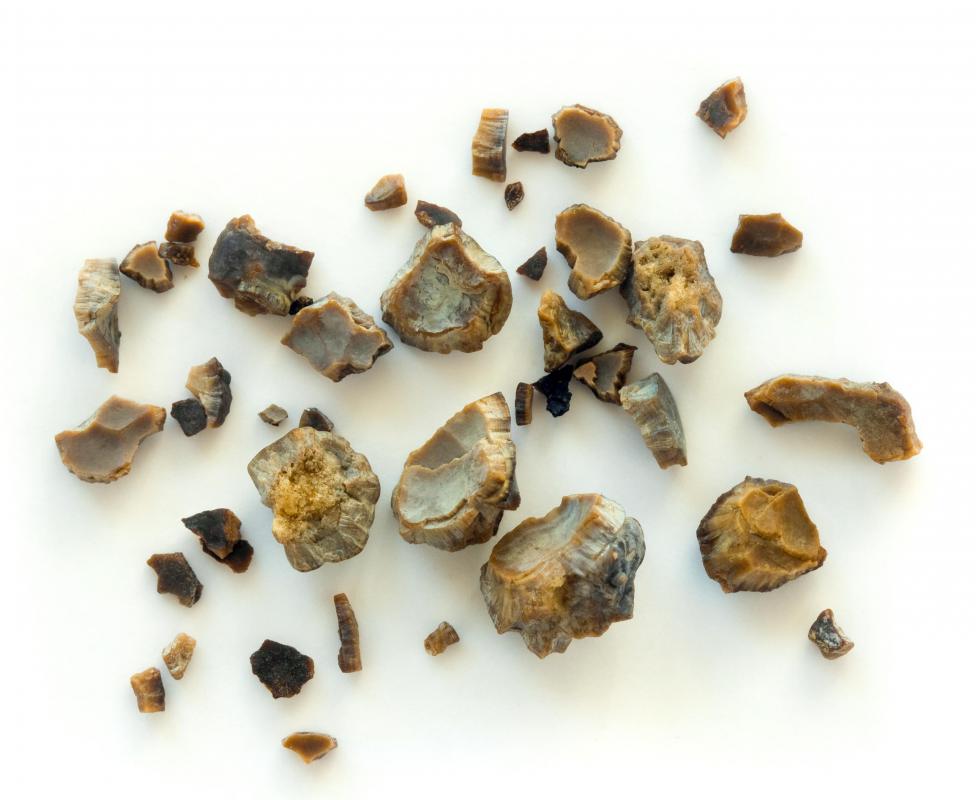At WiseGEEK, we're committed to delivering accurate, trustworthy information. Our expert-authored content is rigorously fact-checked and sourced from credible authorities. Discover how we uphold the highest standards in providing you with reliable knowledge.
What Is Renal Colic?
When sufferers refer to the excruciating pain of a kidney stone attack, they are actually referring to a condition known as renal colic. When a kidney stone begins to form in the kidney, a process known as nephrolithiasis, the hardened calcium stone generally lodges in the kidney's soft tissue. At some point, however, the stone may become dislodged and start to travel down the sufferer's urinary tract towards the bladder and urethra. This sudden movement, and the blockages it causes along the way, create an excruciatingly sharp pain which often radiates throughout one flank of the abdomen and into the back and pelvis area.
Many sources suggest the term colic in renal colic is misleading, since colic suggests a type of pain which appears intermittently or ebbs and flows in waves. The pain generated by the condition is often described as fairly constant, although the level of pain can become much more intense if pressure builds up behind a blockage or the sufferer assumes certain positions. Unlike other types of abdominal pain, a patient suffering from this type of colic will often move continuously in an effort to find a comfortable position.

The onset of renal colic can be deceptively minor, starting out as an indistinct or dull pain in the lower back or flank area. This pain often increasingly incrementally, until the sufferer realizes that over-the-counter pain relievers have little to no effect and the pain becomes impossible to ignore. At this point, at least one kidney stone has most likely become dislodged from the kidney and is blocking regular urinary flow through the ureters. This pressure becomes referred pain in the lower back and kidney area.

As the renal colic pain increases with no relief, many sufferers seek out emergency medical treatment. The pain is often described as knife-like, which could be confused with other abdominal conditions such as appendicitis. A medical professional who suspects renal colic will order several tests, including a urine test for the presence of blood and possibly an ultrasound or x-ray to determine the presence of a kidney stone. The excruciating pain associated with the condition can be treated with an injection of a prescription strength pain medication such as Demerol.

After a few hours, some renal colic sufferers may feel significant relief as the kidney stone progresses into the bladder and passes through the urethra. If the sufferer is still under medical supervision, the urine may be filtered through a mesh screen in order to verify the passing of a kidney stone. If the stone remains stuck in the patient's urinary tract, however, further treatments such as ultrasonic stone crushing or surgical intervention may become necessary.
AS FEATURED ON:
AS FEATURED ON:















Discuss this Article
Post your comments